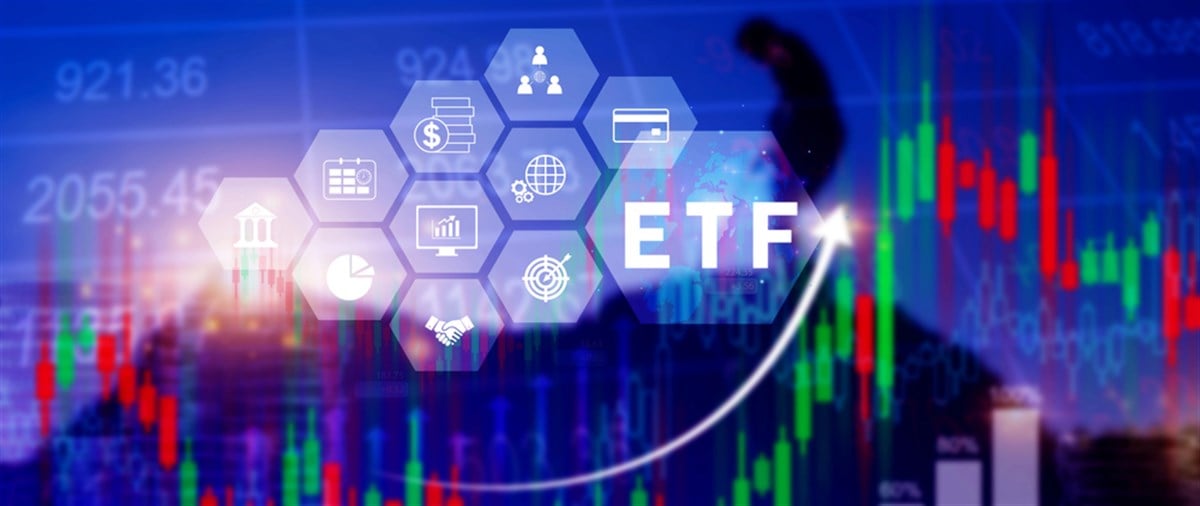
Buy-and-hold ETFs give investors an easy way to quickly broaden their exposure to a sector, investment theme, or even the market as a whole. Further, they minimize the effort and attention required of an investor, making them an appropriate choice for retail investors of all levels. Amid a banner year for the S&P 500, record-high spot prices for gold, significant demand for semiconductors, and other trends, here are some of the top ETFs for the coming year.
VOOG: Super-Charged S&P 500 Growth
Investors interested in holding a basket of growth stocks may consider the Vanguard S&P 500 Growth ETF (NYSEARCA: VOOG). This fund targets roughly 230 of the top growth stocks from the S&P 500 based on momentum, sales growth, and similar factors.
While growth stocks individually are often riskier than more established firms, the companies in this list are large caps that are well-known and stable given their inclusion in the S&P 500, and the breadth of the portfolio—leaning heavily toward tech with additional focuses on communication services and consumer discretionary—provides diversification. VOOG has advanced by more than 40% this year, outperforming the S&P 500.
RING: Indirect Exposure to Gold
Gold has shone brightly in 2024, reaching a series of record-high prices. Investors interested in indirect exposure to gold might look to the iShares MSCI Global Gold Miners ETF (NASDAQ: RING), a broadly diversified fund offering access to gold mining companies in both developed and emerging markets.
RING allows investors to benefit, albeit indirectly, from rising gold prices while also offering access to dividends from mining firms. It is also among the cheapest gold miner ETFs, with an expense ratio of just 0.39%. RING has surged by almost 61% in the last year.
SMH: Liquid Access to Semiconductor Manufacturers
Semiconductor stocks are on an incredible run; indeed, three of the 10 largest publicly traded companies in the world by market capitalization—NVIDIA Corp. (NASDAQ: NVDA), Taiwan Semiconductor Manufacturing Co. (NYSE: TSM), and Broadcom Inc. (NASDAQ: AVGO)—are semiconductor manufacturers. VanEck Semiconductor ETF (NASDAQ: SMH) is a fund that focuses on the U.S. semiconductor industry, holding about two dozen manufacturers with a variety of market caps.
SMH is neither the cheapest nor the most broadly diversified ETF offering some type of exposure to the semiconductor space, but it is one of the most modestly-priced funds with a specific focus on semiconductor companies. It also has an advantage over rivals in its high liquidity, allowing investors to trade easily in or out of the fund.
SCHA: Access to Small-Caps While Mitigating Risk
Small-cap companies offer potential for high reward at the cost of increased risk compared with larger, better-established firms.
This makes investing in individual small-caps less appealing to many investors. A broad small-cap ETF such as the Schwab U.S. Small-Cap ETF (NYSEARCA: SCHA) mitigates that risk through diversification.
SCHA has a sizable portfolio of nearly 1800 U.S.-listed small-cap companies across both value and growth categories. It also offers an attractive expense ratio of just 0.04% and reasonably high average trading volumes.
VIG: Dividend Play Amid Lower Interest Rates
After the Fed's rate cut in September—and with more rate cuts expected through next year—bonds and other fixed-income instruments are likely to lose some of their appeal, while securities that pay dividends can seem more attractive by comparison.
The Vanguard Dividend Appreciation ETF (NYSEARCA: VIG) provides exposure to a basket of about 180 large-cap growth stocks paying dividends. To be included, a company must have a history of increasing dividend payments over at least 10 consecutive years. This last metric provides some assurance that the companies in the portfolio are stable and not overpaying on dividends.
Expense Ratios and Liquidity
When considering an ETF, it's important to note the costs of the fund as represented by the expense ratio, as higher fees can eat into investor gains and there are often multiple funds from different providers centering around the same theme but with different costs. Liquidity, reflected in the fund's trading volume, is also noteworthy, as it can impact the costliness and ease with which an investor can buy or sell shares of that ETF in a more active trading scenario.














